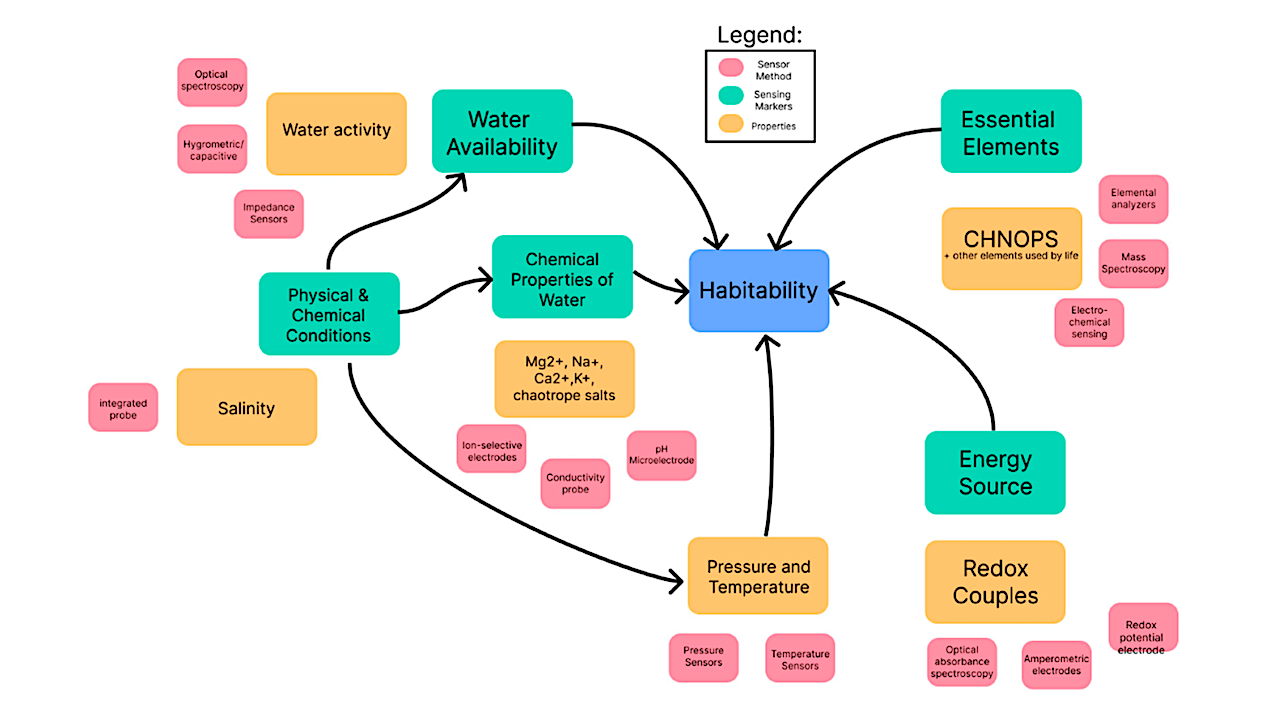Science
Researchers Develop Bioinspired Instrument for Planetary Habitability

Astrobiologists are advancing the search for habitable environments beyond Earth with the development of a novel instrument designed to assess planetary habitability. This initiative aims to create a comprehensive tool that can simultaneously measure essential indicators such as liquid water, carbon, hydrogen, nitrogen, oxygen, phosphorus, and sulfur—collectively referred to as CHNOPS elements—along with other vital nutrients and energy sources.
The concept, referred to as the “Total Habitability Instrument,” draws inspiration from biological systems to enhance its functionality and efficiency. Researchers believe that a single, integrated device could streamline the process of evaluating extraterrestrial environments, a critical requirement for future planetary exploration missions. This instrument would significantly reduce the complexity and cost associated with deploying multiple separate sensors.
Key Technologies for Measurement
The design of the Total Habitability Instrument incorporates various sensing technologies capable of detecting the necessary indicators of life. For instance, it will utilize advanced spectrometry to analyze soil and atmospheric samples for the presence of liquid water and essential elements. This technology is pivotal since the presence of liquid water is a fundamental criterion for assessing habitability.
Moreover, the instrument is expected to employ a combination of chemical and biological assays to evaluate nutrient availability and energy supplies. By integrating these technologies, the instrument aims to provide a holistic view of a planetary body’s potential to support life as we know it.
The research team is currently in the prototype development phase, with plans to conduct field tests on Earth before deploying the instrument on missions to Mars and other celestial bodies. The anticipated timeline for these tests is set for early 2025, marking a significant milestone in astrobiological research.
Implications for Future Exploration
The implications of successfully developing such an instrument extend beyond mere curiosity about life on other planets. Understanding habitability can inform future missions to astrobiologically relevant locations, potentially guiding the search for extraterrestrial life and expanding our knowledge of the universe.
As the space exploration community continues to prioritize the search for habitable environments, the Total Habitability Instrument stands out as a promising tool. By combining multiple sensing capabilities into one device, researchers hope to enhance the efficiency and effectiveness of planetary exploration missions.
With ongoing developments in astrobiology and related fields, the pursuit of understanding life beyond Earth remains a compelling objective, highlighting the need for innovation in scientific instrumentation. As this project advances, it could pave the way for groundbreaking discoveries in our quest to uncover the mysteries of the cosmos.
-

 Business2 weeks ago
Business2 weeks agoForeign Inflows into Japan Stocks Surge to ¥1.34 Trillion
-

 Top Stories3 weeks ago
Top Stories3 weeks agoMarc Buoniconti’s Legacy: 40 Years Later, Lives Transformed
-

 Top Stories3 weeks ago
Top Stories3 weeks agoBOYNEXTDOOR’s Jaehyun Faces Backlash Amid BTS-TWICE Controversy
-

 Health3 weeks ago
Health3 weeks agoInnovative Surgery Restores Confidence for Breast Cancer Patients
-

 Sports1 month ago
Sports1 month agoSteve Kerr Supports Jonathan Kuminga After Ejection in Preseason Game
-

 Science2 weeks ago
Science2 weeks agoUniversity of Hawaiʻi Joins $25.6M AI Project to Monitor Disasters
-

 Science1 month ago
Science1 month agoChicago’s Viral ‘Rat Hole’ Likely Created by Squirrel, Study Reveals
-

 Entertainment1 month ago
Entertainment1 month agoZoe Saldana Advocates for James Cameron’s Avatar Documentary
-

 Lifestyle1 month ago
Lifestyle1 month agoKelsea Ballerini Launches ‘Burn the Baggage’ Candle with Ranger Station
-

 Top Stories3 weeks ago
Top Stories3 weeks agoCarson Wentz Out for Season After Shoulder Surgery: Urgent Update
-

 Politics1 month ago
Politics1 month agoDallin H. Oaks Assumes Leadership of Latter-day Saints Church
-

 Lifestyle1 month ago
Lifestyle1 month agoDua Lipa Celebrates Passing GCSE Spanish During World Tour









